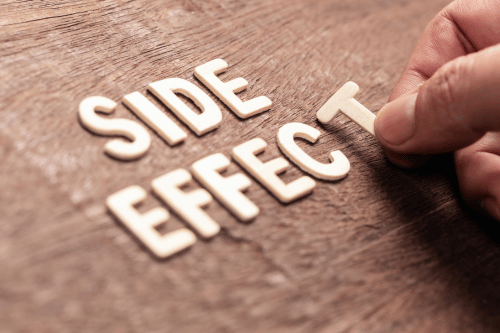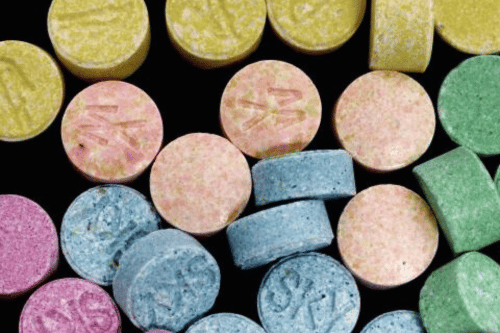Molly vs E: Understanding the Differences Between Two Popular Party Drugs
Molly vs E is a debate often discussed within the context of party culture, where both substances are commonly used for their euphoric and stimulating effects. Although Molly and ecstasy share similarities, they differ in terms of their composition, form, and associated risks. Understanding these differences is essential for individuals experimenting with these substances and for those seeking help with substance use disorder and drug abuse.
What is Molly?
Molly is a crystalline or powder form of MDMA (3,4-methylenedioxy-methamphetamine). It is often marketed as a pure form of the drug, free from contaminants. However, this perceived purity is deceptive, as street-level Molly is often adulterated with other substances such as synthetic cathinones (commonly known as bath salts) or other chemicals that enhance or alter its effects.
Molly is particularly popular in music festivals, rave culture, and house parties, where users seek euphoric effects, emotional openness, and heightened sensory perceptions. Due to its reputation as the “hug drug,” Molly fosters feelings of closeness and empathy among users, but this can also encourage risky behavior, such as unprotected sex or dehydration.
The Risks of Molly Use
While Molly is often perceived as safer than other stimulants, it carries significant risks:
Overheating (hyperthermia): Molly can cause the body to overheat, especially in crowded environments like clubs or festivals.
Involuntary jaw clenching: Many users report involuntary clenching or grinding of teeth, a side effect linked to its impact on serotonin and dopamine systems.
Mood swings and cognitive impairments: Regular or heavy use can result in emotional instability and difficulties with concentration or memory.
Withdrawal symptoms: After the effects wear off, users may experience depression, sleep problems, and decreased appetite.
Due to the presence of additional substances, users never truly know what they are ingesting. This increases the potential for dangerous drug interactions and unexpected side effects.
What is Ecstasy?

Ecstasy typically refers to MDMA pressed into colorful tablets. These ecstasy tablets often feature logos or symbols, which are part of their branding within rave and party drug culture. However, these pills can contain other stimulants such as methamphetamine, caffeine, or bath salts to enhance their potency.
Ecstasy is especially popular at music festivals, clubs, and house parties due to its ability to create intense feelings of euphoria and emotional connection. The tablets are frequently referred to as “disco biscuits” or “lover’s speed,” referencing the emotional warmth and heightened sociability they produce. MDMA addiction treatment is crucial for those who become dependent on ecstasy, involving various therapies to help manage addiction and support recovery.
Ecstasy and Its Risks
Although ecstasy is known for its ability to generate a euphoric high, it also carries many risks:
Body temperature regulation issues: Ecstasy can disrupt the body’s ability to manage heat, which can be life-threatening in hot or crowded environments.
Blurred vision and cognitive impairments: Users may experience temporary impairments to their vision and cognitive function.
Risk of overdose: Since ecstasy pills may contain various other drugs or synthetic substances, it is difficult to gauge the potency or predict the effects, increasing the risk of overdose.
Substance use disorder: Regular use of ecstasy can lead to addiction, resulting in withdrawal symptoms such as mood swings, fatigue, and cravings.
History and Popularity of Molly and Ecstasy
Molly and ecstasy have a long history that dates back to the early 20th century. MDMA, the synthetic drug that both Molly and ecstasy are derived from, was first synthesized in 1912 by German chemist Anton Köllisch. Initially, it was used as an appetite suppressant, but its psychoactive properties were soon discovered, and it became popular as a party drug in the 1970s and 1980s.
Ecstasy, in particular, gained notoriety in the 1980s as a “hug drug” due to its ability to produce feelings of euphoria and empathy. It was often used in rave culture and became a staple of the electronic dance music scene. Molly, on the other hand, emerged in the 2000s as a supposedly “purer” form of MDMA, often sold in powder or crystal form.
Both Molly and ecstasy have remained popular party drugs, despite their potential risks and dangers. Their widespread use has led to a growing concern about MDMA addiction and the need for effective treatment options.
Effects of Molly and Ecstasy
Molly and ecstasy are known for their potent effects on the body and mind. While they are often used recreationally, they can have serious consequences, especially when used excessively or in combination with other substances.
Short-Term Effects
The short-term effects of Molly and ecstasy can include:
Increased energy and alertness
Enhanced sensory perception
Feelings of euphoria and empathy
Increased heart rate and blood pressure
Hyperthermia (sharp increase in body temperature)
Dehydration
These effects can last anywhere from 3 to 6 hours, depending on the individual and the dosage.
Long-Term Effects
The long-term effects of Molly and ecstasy use can be severe and potentially life-threatening. Some of the potential risks include:
MDMA addiction
Memory loss and cognitive impairment
Mood disturbances, including depression and anxiety
Sleep disorders
Increased risk of depression and anxiety
Cardiovascular problems
Dental problems and jaw disorders
Molly vs E: Key Differences and Similarities
When comparing Molly vs ecstasy, it’s essential to recognize that both contain MDMA, but their forms and associated risks differ:
Molly: Sold in crystalline or powder form and marketed as pure MDMA. Often perceived as safer, but commonly adulterated with other substances.
Ecstasy: Comes in pill form and frequently mixed with stimulants or synthetic cathinones. These tablets are branded with unique designs, but they often contain harmful chemicals.
Both Molly and ecstasy share similar risks, including substance use disorders, withdrawal symptoms, and potentially dangerous side effects.
The Danger of Party Drugs, Substance Use, and Addiction

MDMA addiction can result in long-term health consequences, including cognitive impairments and emotional dysregulation. Both Molly and ecstasy affect serotonin levels, which, when depleted, can lead to mental health challenges like depression and anxiety.
Over time, continued use may result in addictive behaviors and a need for higher doses to achieve the same effects, leading to more significant health risks. Substance use disorders involving Molly or ecstasy often require professional intervention to manage both the withdrawal symptoms and underlying psychological factors driving the addiction.
Treatment Options and Withdrawal Symptoms for MDMA Addiction
If someone struggles with MDMA addiction, professional treatment options are essential for recovery. Programs may include:
Outpatient programs: These allow patients to receive therapy and support while maintaining their daily responsibilities.
Medical supervision: Withdrawal from MDMA can be difficult, and medical attention ensures that symptoms such as teeth clenching, decreased appetite, and fatigue are managed effectively.
Therapy for substance abuse: Cognitive-behavioral therapy (CBT) can address the root causes of addiction and teach coping strategies to manage triggers.
Various therapies: In addition to individual counseling, group therapy and peer support can help patients build a strong recovery network.
Recovery and Rehabilitation
Recovering from Molly and ecstasy addiction requires a comprehensive treatment approach that addresses the physical, emotional, and psychological aspects of addiction. Treatment options may include:
Medical detox to manage withdrawal symptoms
Residential treatment programs that provide a supportive environment and therapy
Aftercare support to help individuals maintain sobriety and prevent relapse
Counseling and therapy to address underlying issues and develop coping strategies
It’s essential to seek professional help if you or someone you know is struggling with Molly or ecstasy addiction. With the right treatment and support, it’s possible to overcome addiction and regain control of your life.
Why Medical Supervision is Critical

Because both Molly and ecstasy can contain other drugs, seeking immediate medical attention for overdose or adverse effects is essential. Symptoms such as elevated blood pressure, sleep disturbances, and sensory distortions indicate the need for urgent care. Medical supervision is also vital during withdrawal to prevent relapse and support long-term recovery.
Conclusion: Understanding Molly vs E
In the debate of Molly vs ecstasy, both substances share MDMA as their primary component but differ in form, purity, and associated risks. Whether in pill form or powder form, these substances can have serious consequences for mental and physical health. Both drugs carry the risk of substance abuse and negative consequences, including cognitive impairments and emotional dysregulation.
At Revival Mental Health, we understand the challenges associated with substance use disorders and provide specialized programs to help individuals regain control of their lives. Our recovery journey includes therapy, medical supervision, and the tools necessary to build a healthier future.
If you or someone you love is struggling with MDMA use, contact Revival Mental Health today to explore treatment options and begin the path toward recovery.





